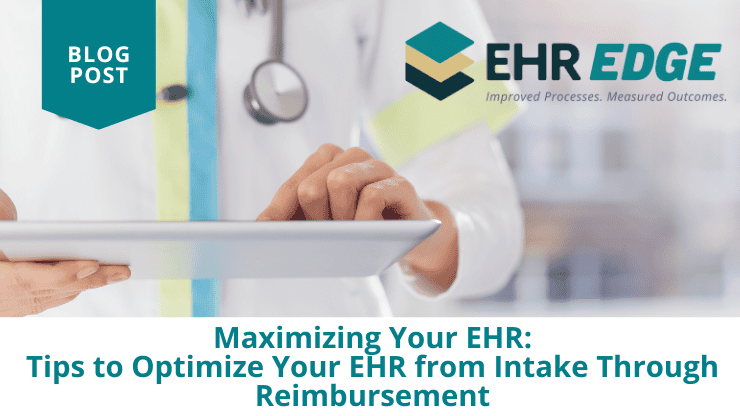There is no shortage of challenges for today’s Health and Human Service Agencies. Top-of-mind issues for agency leadership include
- Staffing levels
- Staff retention
- Financial management
- Regulations and compliance
- Readiness for Value-Based payment modesl and Performance-Based Contracting
(And dare we mention growth?)
Fully utilizing an EHR is key to addressing each of these challenges.
The EHR Opportunity
As we begin to enter an Endemic Phase of COVID and assess the impacts, agencies need to see and understand Key Performance Indicators related to the challenges above. These are the management insights that create competitive advantage, and the ticket to these insights is full utilization of your EHR. Fully leveraging your EHR results in standardization, operational efficiency, and control – with a wrapper of consistency.
Invest in Fully Utilizing Your EHR
Across the board, agencies made meaningful investments in Operational and Financial Systems, but investments in utilization & optimization of the EHR across all programs remain lacking.
The evolution of the Electronic Health Records (EHR) Systems has been part of the landscape for years. Yet many agencies are not utilizing these expensive systems fully – far from it, in fact!
Many agencies with multiple service lines are working with a bunch of half-baked cakes when it comes to utilization of their EMR/EHR systems. Some program areas may be using the system for most but not all of its capabilities, while other program areas may not be using the EHR at all. They’re still using spreadsheets – or worse.
What You Lose When You Aren’t Fully Utilizing Your EHR
Disjointed or incomplete systems create a domino effect when it comes to reimbursements. Fiscal staff levels are higher than necessary to compensate for EHR underutilization. This then drives up Human Capital Cost and creates a slower turn getting money back into the agency. Staff are also performing a ton of manual work to translate and submit reimbursements to payers because of the low (to no) level of EHR use. Payers are all too happy to kick them back, which gives your staff even more work, as they try to resolve them. All these inefficiencies for the fiscal staff then get passed on into service delivery. Failing to fully utilize your EHR becomes a vicious cycle.
Furthermore – and more importantly – agencies lack clean data when a mix of manual and partial automation is at play. Fully and consistently utilizing your EHR captures all your data, making it easier to demonstrate value and to make decisions that are truly data-driven.
In the end, agencies that fully utilize their EHR – those with an optimized EHR from intake through reimbursement – score the wins!
Fully Utilizing the EHR – Where Do We Go from Here?
To get from Point A (no EHR or an underutilized EHR) to Point B (consistent, full use of an EHR), agencies must commit to the following initiatives.
- Agency Leadership must commit to the goal of improvement. (ALL FOR ONE AND ONE FOR ALL)
- “A Plan” must be developed with the goal of defining and standardizing outcomes, one program area at a time. (START WITH THE END IN MIND)
- Programs must form teams of champions and have brutally honest dialog about how they currently manage their areas. Identifying how the EHR is being leveraged and how much occurs outside of the system(s) must be the goal of these discussions. (FIRST SEEK TO UNDERSTAND, RATHER THAN BE UNDERSTOOD)
- Cross Reference to Fiscal to determine effectiveness of services performed to reimbursements and to identify gaps. (DETERMINE IMPACTS)
- Get outside help from a true partner that’s knowledgeable and capable to build the path forward. (UNBIASED, HONEST INPUT & STANDARDIZED BEST PRACTICES ARE A MUST)
Miss any one of these elements, and you’ll fail to fully utilize your EHR.
Stick to these five courses of action, and you’ll end up with a fully utilized EHR.
Thinking about Changing Your EHR?
Finally, if you think you’re off the hook because you have an EHR, and you’re simply transitioning to a new EHR, you are sorely mistaken. It’s not like changing a light bulb. The whole “electrical system” needs to be overhauled to keep the (EHR) “lights on” with the new system.
Each of these commitments must also be in place for agencies looking to change their EHR, in order to ensure full utilization of their new EHR. Furthermore, there’s legwork to be done prior to engaging the EHR software vendor. This prerequisite work establishes a framework and begins the process of defining accountability when engagement begins.
To schedule a free EHR System Optimization consultation with a member of the EHR Edge team, click here.
About EHR Edge
EHR Edge is a trusted partner for Human Service Agencies, helping them navigate change with confidence. Our collaborative approach empowers your team, streamlines workflows, and drives lasting success, so you can focus on making a meaningful impact in your community.

